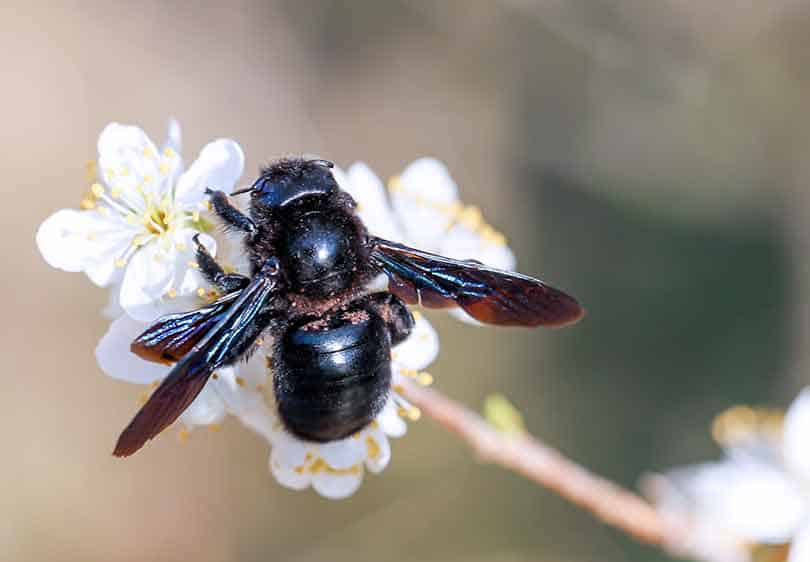Efficient Pest Control Solutions for Vole Infestations

In the realm of parasite control, vole infestations provide a special challenge that demands a tactical method. By delving right into the details of vole habits and checking out a range of control methods, a comprehensive pest management plan customized to these evasive creatures can be crafted. From natural repellents to cutting-edge capturing methods, the toolbox against vole problems is multi-faceted.
Understanding Vole Behavior
Voles, tiny rats typically found in gardens and areas, show unique behavior patterns that are important to comprehend when implementing bug control procedures - utah vole control. These creatures are prolific miners, producing a substantial network of tunnels underground where they nest, store food, and look for shelter from killers and severe weather. Voles are herbivores and mostly feed upon yards, roots, seeds, and light bulbs, making gardens and areas optimal habitats for them
One key habits of voles is their quick rate of recreation. Females can offer birth to multiple clutters every year, with clutter sizes ranging from three to 6 pups. This high reproductive capability allows vole populations to quickly multiply, resulting in invasions if left uncontrolled.
Recognizing vole habits likewise includes recognizing their patterns of movement and foraging. Voles produce surface area paths in grassy areas as they take a trip between their burrows and food resources. By observing these runways and the areas of burrow entrances, bug control experts can identify high-traffic areas and strategically location catches or deterrents to efficiently manage vole populaces.
All-natural Repellents and Deterrents
With an understanding of vole actions as a structure, discovering all-natural repellents and deterrents comes to be essential in effectively handling vole infestations in fields and yards. In addition, integrating predator pee, such as that of foxes or prairie wolves, around the yard boundary can create an all-natural barrier that signals threat to voles, motivating them to stay away.
Furthermore, making use of castor oil-based repellents can interfere with vole passages as they find the smell and preference undesirable, motivating them to relocate. Mulching with products like gravel, lava rocks, or crude sand can also deter voles as they dislike digging with these harsh compounds. Applying a combination of these all-natural repellents and deterrents can assist effectively handle vole populations in a lasting and non-toxic fashion, safeguarding crops and yards from vole damage.
Trapping Methods for Voles

Break catches are made to kill voles instantly upon activation. These traps need to be positioned in locations where voles are recognized to take a trip, such as close to burrow entries or along their runways. It is important to examine snap catches consistently and throw away any kind of caught voles without delay to make sure the efficiency of the capturing process.
Live catches are an extra humane choice for those who want to record voles without hurting them. As soon as a vole is caught in a real-time catch, it can be safely transported to a different area and released unhurt. Live catches need to be inspected regularly to avoid stress and anxiety or harm to the caught Our site voles.
When establishing traps for voles, it is vital to consider their behavior and routines to increase the probability of success (vole control utah). By making use of the suitable capturing strategies, vole populations can be efficiently taken care of, reducing the damage they trigger to farming and yard areas
Carrying Out Physical Barriers
To better strengthen directory the defense versus vole problems, the strategic application of physical obstacles emerges as a positive action to protect farming and yard locations. Physical barriers such as cable mesh, hardware fabric, or fencings can be mounted underground to avoid voles from tunneling right into areas or yards. Burying these obstacles at the very least 12 to 18 inches deep and angling them exterior can effectively deter voles from tunneling into the safeguarded location. Furthermore, building fences with small mesh size at the base can impede the voles' capacity to access the greenery over ground level.
Moreover, making use of tree guards or trunk covers made of steel or plastic can protect tree trunks from vole damage during wintertime months when other food sources are limited. These guards ought to expand over the expected snow line to prevent voles from gnawing on the bark. Normal assessment and maintenance of these obstacles are crucial to ensure their continued effectiveness in preventing vole intrusions and shielding useful crops and plants.
Integrated Parasite Administration Methods
Integrating different pest control techniques, consisting of organic controls, habitat manipulation, and tracking, creates the basis of effective Integrated Parasite Management techniques for resolving vole infestations. Biological controls include presenting all-natural killers of voles, such as owls or serpents, to the affected area to help minimize vole populaces.
Verdict
In verdict, reliable pest control solutions for vole infestations include comprehending vole habits, using all-natural repellents and deterrents, applying capturing techniques, and establishing physical barriers. Integrated pest management techniques can also be employed to attend investigate this site to vole invasions thoroughly. By incorporating these approaches, property owners can properly manage and mitigate vole populaces without the demand for extreme pesticide use.
With an understanding of vole behavior as a structure, exploring all-natural repellents and deterrents comes to be crucial in effectively taking care of vole problems in areas and gardens. Executing a combination of these all-natural repellents and deterrents can aid properly take care of vole populaces in a non-toxic and sustainable fashion, securing plants and gardens from vole damage.
Incorporating numerous pest control approaches, including biological controls, environment control, and tracking, develops the basis of efficient Integrated Bug Monitoring techniques for addressing vole invasions. Biological controls include presenting natural killers of voles, such as owls or snakes, to the afflicted area to aid minimize vole populations (utah vole control).In final thought, reliable pest control options for vole infestations entail understanding vole actions, utilizing natural repellents and deterrents, applying trapping methods, and establishing up physical barriers